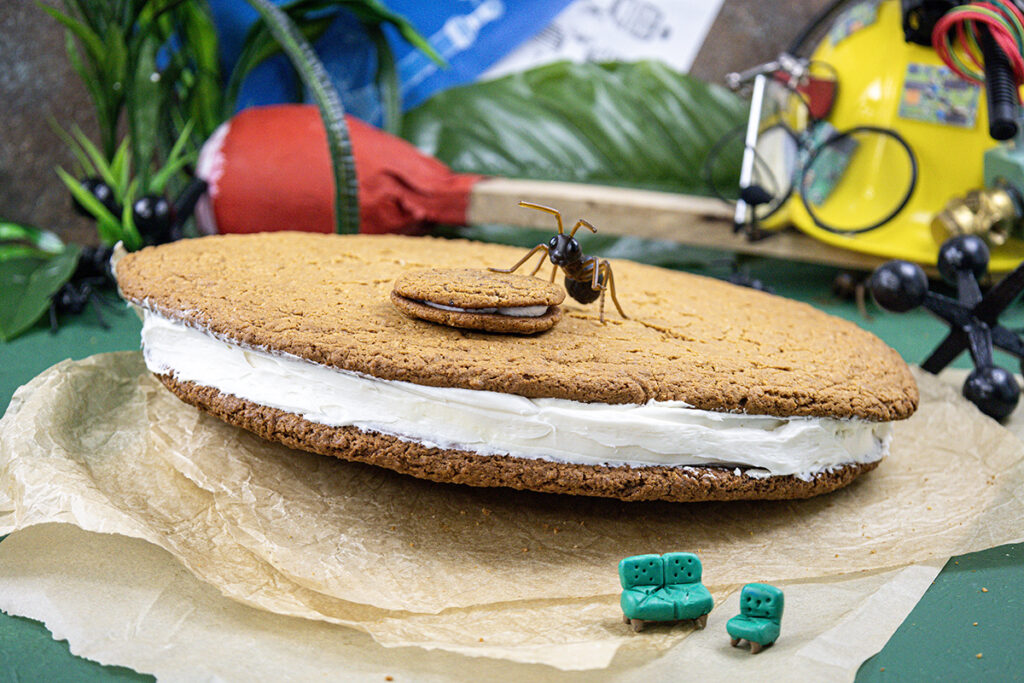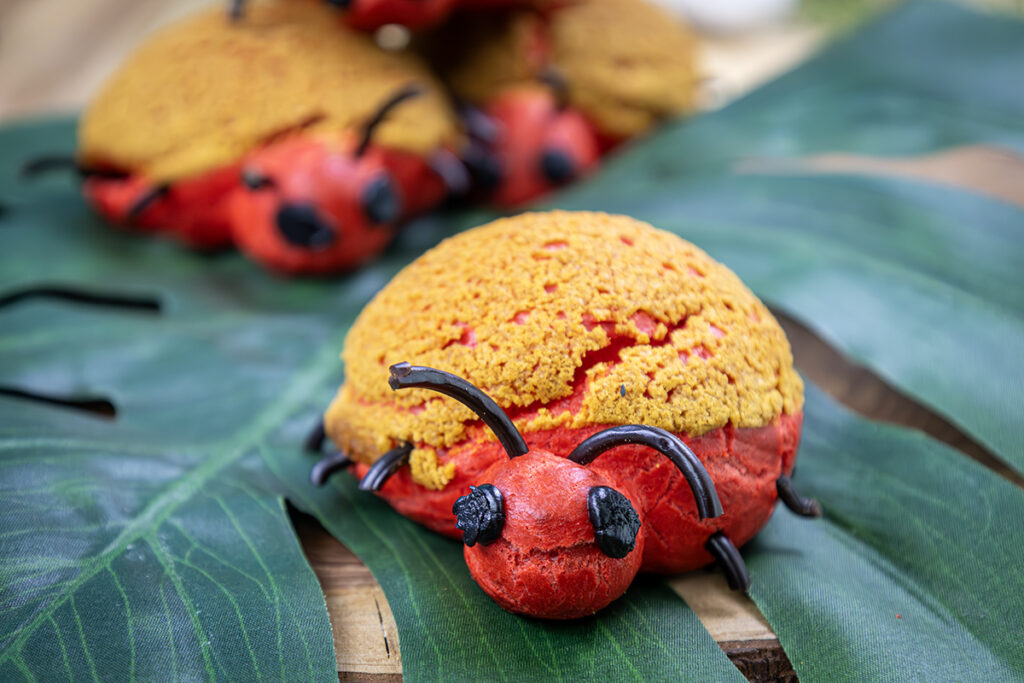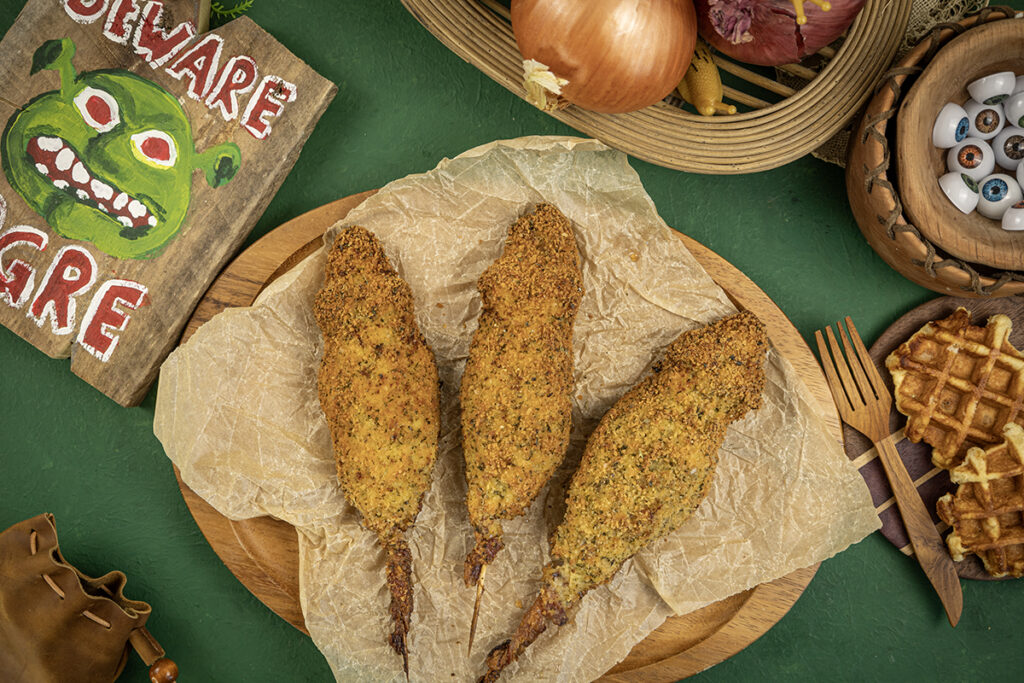How & Where to Find Morel Mushrooms
The Starving Chef is supported by Hungry People like you. When you make a purchase through an affiliate link on my site, I may earn a little bit of cash on the side (at no extra cost to you) to help keep my kitchen running. Read our disclosures here.
There’s gold to be found in the foothills of Ohio. Tucked away in pastures and hidden amongst the bark of old elm trees are one of the tastiest mushrooms you can find in the wild: morels
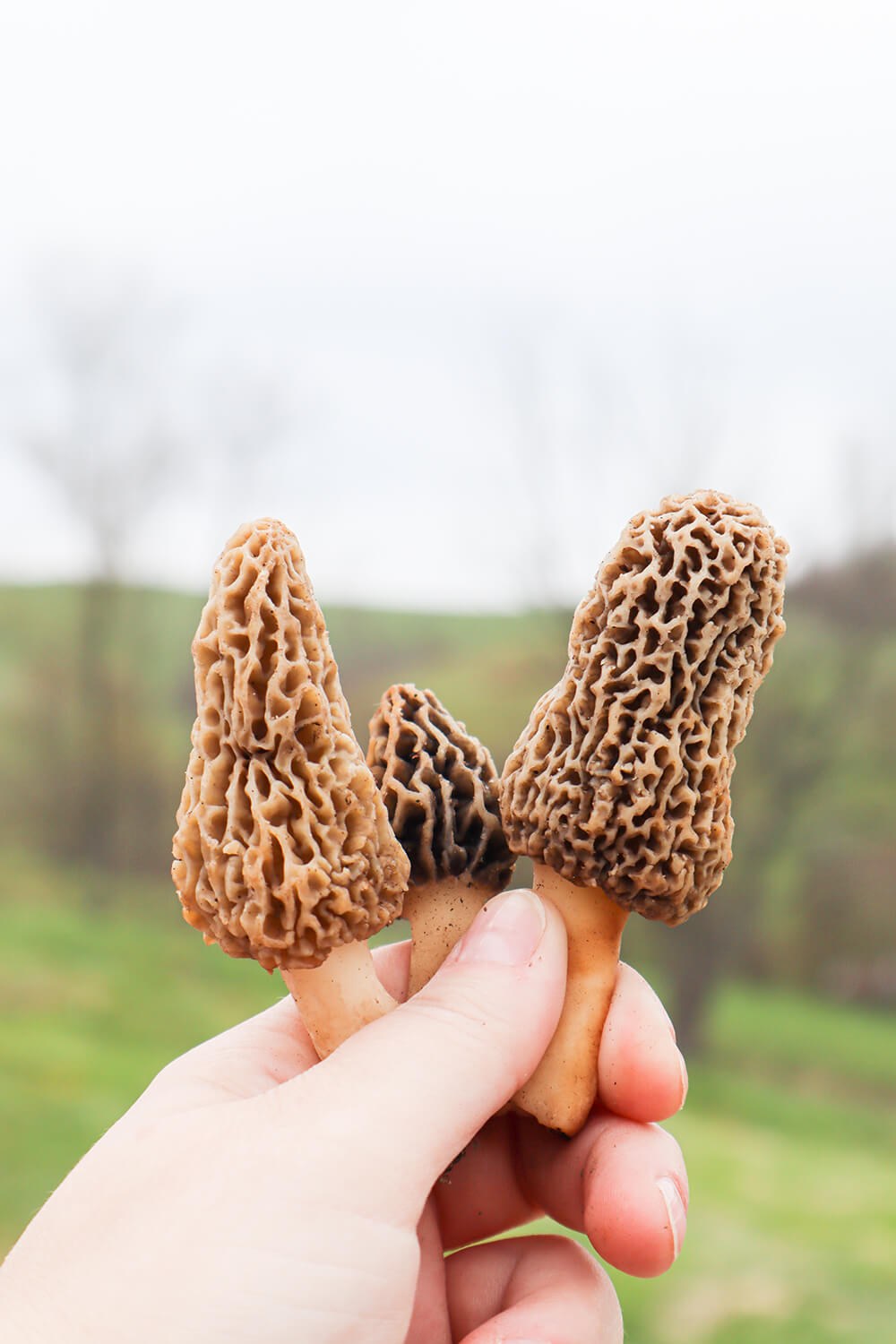
Morels have a complex and earthy umami flavor, likened to roasted nuts or even ramen noodles. With a short and delicate growing season, not only are morels extremely hard to find, they are also completely hollow – making them one of the most expensive mushrooms in the world, ranging anywhere from $60-90 per found for fresh and nearly $250 per pound when dried.
So we crossed our fingers and headed out to Ohio’s eastern farm land to do some foraging. Seasoned morel hunters will likely keep their morel spots a secret, but lucky for us, we have Mark. Mark is a lifelong farmer and resident of good old Barnesville, Ohio – and he also happens to be my future father-in-law.
A seasoned country boy cow farmer, Mark knows his huge plot land like the back of his hand. With a man like Mark on our side, we felt assured we would find us some morels – AND WE DID!
They may not all be big, but they are morels! The smaller ones are especially tender and delicious – so even though they are aren’t fully grown, we’ll still be able to cook something delicious with them.
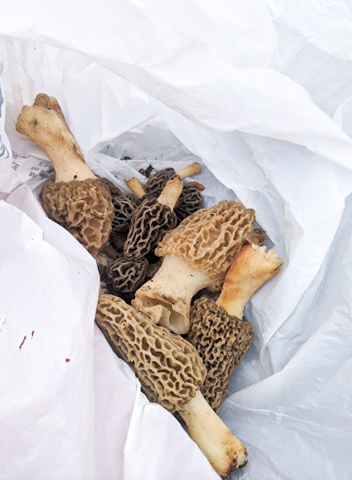
The best spots to find morels, according to Mark, is on the southsides of hills under dead or decaying elms and apple trees. You know the morels are coming when may apples start appearing – usually in late April and peaking sometime in early May.
For us city folk, these are what may apples look like:

Ideally, morels will grow around decaying elms that have dropped most of their bark. They can grow in the brush around these trees and can be tucked beneath downed branches and leaves.
With our first find under our belts, we continued on into the pasture, dodging cow pies along the way. It was easier to spot the elm trees by looking down through the trees from along the tree line. And Mark had no problems leading us straight through thorn bushes and brambles in order to find the perfect trees to search.
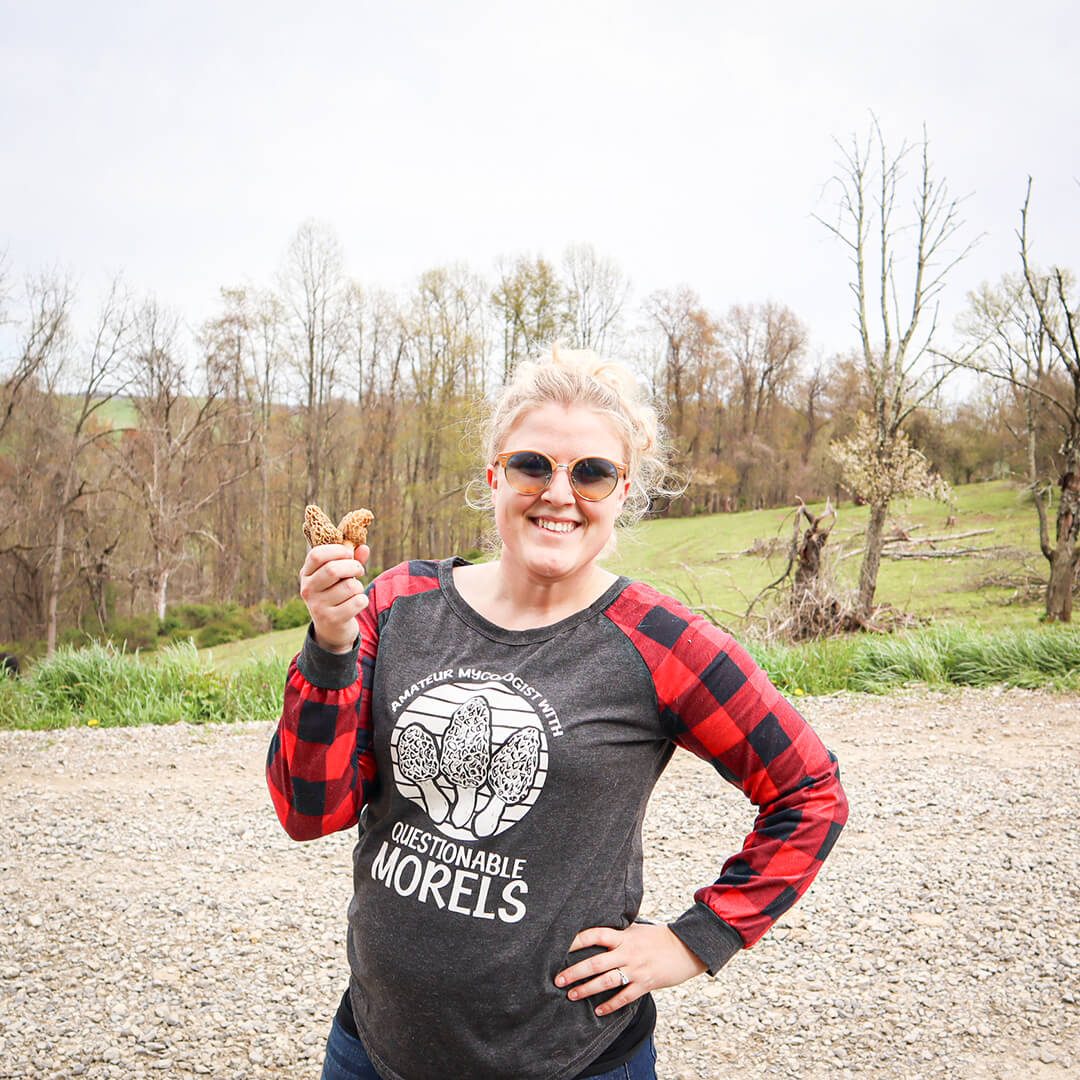
Finding these pristine morels was like finding a little bit of gold in the woods. Fully grown and beautiful, I was lucky to spot these gorgeous morels.
Morels blend in perfectly with the leaves, so it takes a sharp eye to spot them amongst the detritus on the ground. And if you’re anything like Nick or Mark, you’ll walk right by most of the good ones without even noticing them. Thankfully, they had me with them to finally spot the motherlode of morel patches.

We were a bit early in the morel season, so even finding the few that we did was an incredible thrill. I know I’ll be back out and foraging the next time we go down to the farm. They are lucky to have the ability to forage for these bad boys on their own land – many places no longer allow for foraging, espeically public parks or private property, so be sure to double check the laws to make sure you have permission to forage on the land.
And of course, in the days after our adventure, I was sent pics of the morels they started finding.
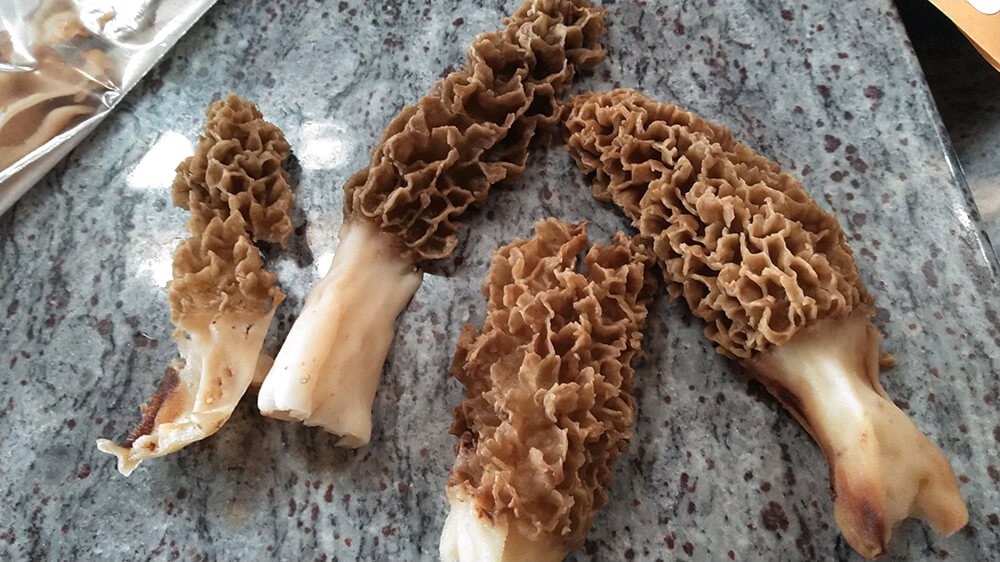
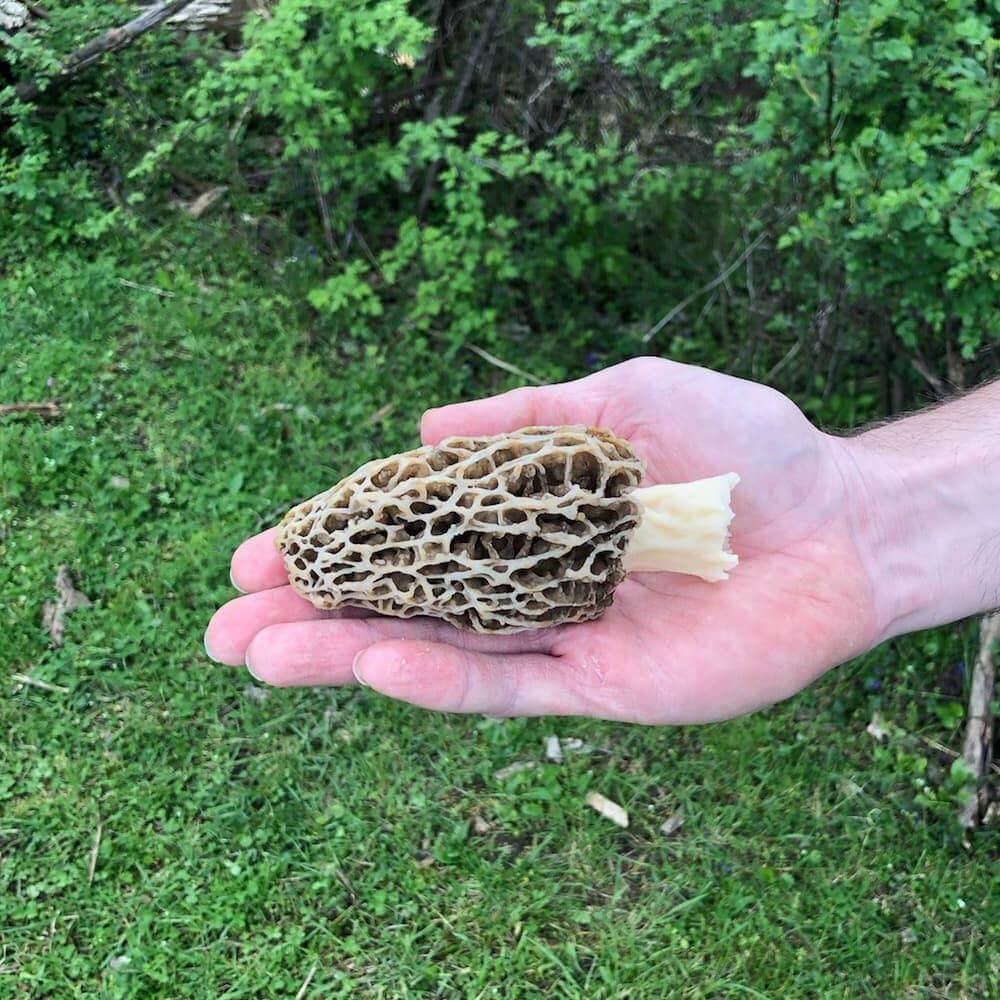
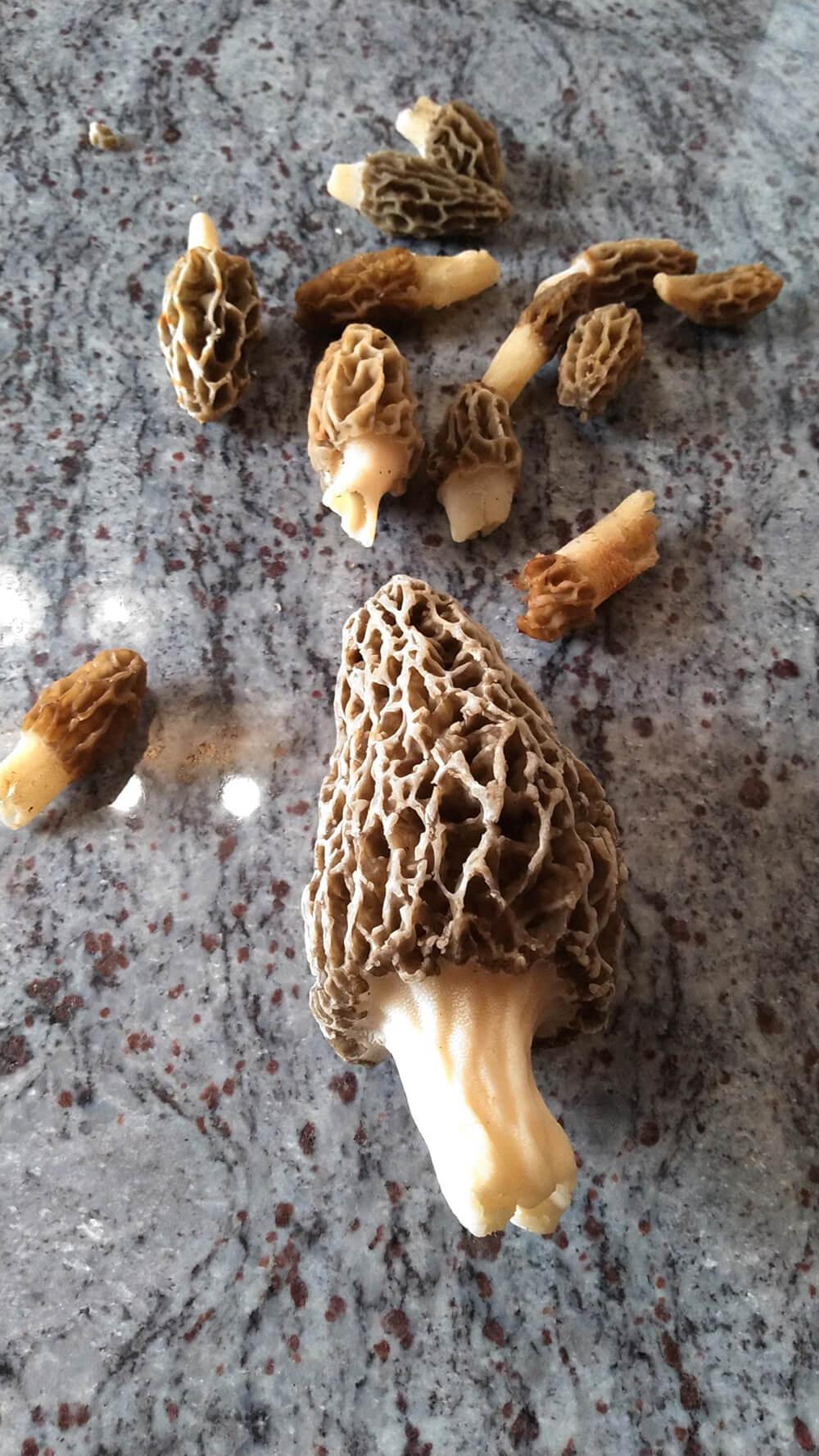
One thing is for sure, we’ll definitely be heading back out into the wilderness to find more Molly moochers in the future.
I even made myself a shirt, special for foraging for my new favorite fungus! I love having a Cricut so that I can make myself these silly shirts for basically no other reason than my own amusement.

Happy Foraging!




























